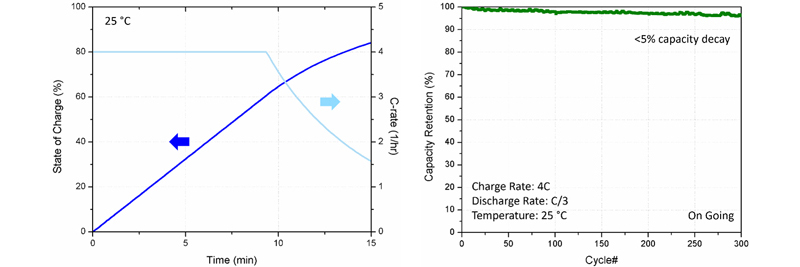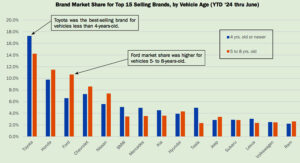All-solid-state battery achieves mark of 0 to 80% state of charge in under 15 minutes for EVs
Tucson, Ariz.—Ampcera Inc. has announced that its all-solid-state battery (ASSB) technology has achieved a fast-charging milestone of 0 to 80% state of charge (SOC) in under 15 minutes at a peak C-rate of 4C. This advancement demonstrates the fast-charging potential of ASSB — a key requirement for the widespread adoption of electric vehicles (EVs), the company said.
Ampcera’s ASSB technology, which comprises IP-protected sulfide solid-state electrolyte materials, is engineered for extreme fast charging. A high-capacity NMC cathode and a silicon-based anode are used to achieve a high energy density goal of 400 Wh/kg. The ASSB is devoid of any liquid or semi-solid electrolyte ensuring the highest levels of battery safety, which is particularly crucial during rapid charging cycles. Lab-scale pouch cells exhibited less than 5% capacity decay after 300 cycles of repeated fast charging (4C peak C-rate) demonstrating the potential for a long cycle life of greater than 1000 cycles in commercial cells once fully developed.
“Ampcera’s high-performance solid-state electrolyte materials have propelled ASSB technology beyond the U.S. Department of Energy (DOE)’s fast-charging benchmark of achieving an 80% charge in under 15 minutes,” said Sumin Zhu, Co-Founder and CEO of Ampcera Inc. “Our primary objective is to introduce a commercially viable fast-charging ASSB technology that addresses consumer charge anxiety caused by extended wait times at charging stations.”
Last year, Ampcera was awarded a $2.1 million grant from the U.S. DOE’s Advanced Research Projects Agency-Energy (ARPA-E) as part of the EVs4ALL program. This grant underscores Ampcera’s commitment to advancing the development and commercialization of all-climate, fast-charging ASSB technology in collaboration with key industry partners, including a major U.S. automaker. Achieving an 80% charge in 15 minutes or less is considered an extreme fast-charging goal for lithium batteries, as outlined by both the United States Advanced Battery Consortium (USABC) and the U.S. DOE.











Comments are closed.